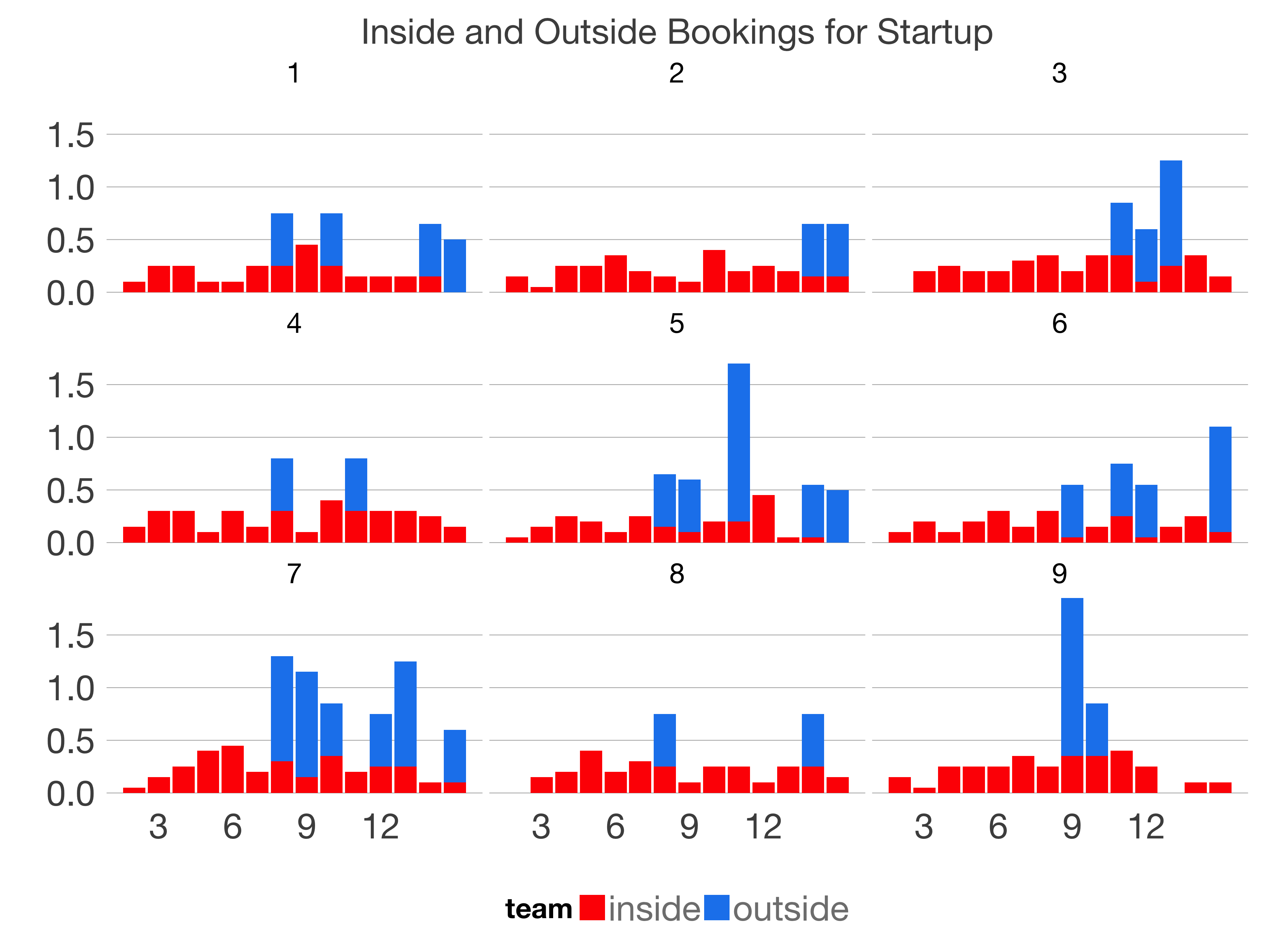
Monte Carlo Simulations Of Inside And Outside Sales Teams In A SaaS Startup
By Tomasz Tunguz from Redpoint Ventures,
Recently, a VP of sales told me about the way he views the dynamic between inside and outside sales. Inside sales is the drumbeat, a highly predictable sales organization whose consistency enables outside sales to swing for the fences. I never heard it expressed quite this way, but I do think there’s some truth to it. To prove it to myself, I ran a Monte Carlo simulation for hypothetical startup.
Monte Carlo simulation uses probability to show how things might evolve for this theoretical business. Each team has a 20% chance of closing a lead. The inside team has a 5% chance in months one and two, and a 10% chance in month 3. The outside team has a 5% chance in months 6 through 9 each.
The inside team books $50,000 annual contracts and the outside team books $500,000 annual contracts. Quota for the inside team is $750,000 per year and for the outside team is $1 million per year. Both teams attain quota. In this model, the bookings capacity of each team is the same at $3 million. This implies 4 inside reps and 3 outside reps.
The chart above shows nine different evolutions of a startup with an inside sales team and an outside sales team. The scenarios can be quite different even if the probabilities are the same across them.
In scenario one, the inside sales team is pretty consistent through month 14, but then falls to zero in month 15. It hits a high close to half million dollars worth of bookings in month 8. In scenario two, the inside team carries the company through month 13 and the outside sales team finally closes two deals in each of the last two months. In scenario five, the outside sales team books more than $1 million in month 10, and another $2 million over the course of the first 15 months.
The variety in the scenarios is striking. Contrast the success of the field sales team in scenarios 5 and 7 with scenarios 2 or 1. They feel like very different organizations, don’t they? Even if they are playing the same odds.
If we sum the bookings by team over the first 15 months, we can see that differences more plainly. In the first four scenarios, the inside team books substantially more, up to three times the bookings of the outside teams. But in scenarios four and seven, the outside teams outperform.
Said another way, the standard deviation of the outside team’s performance is three times greater in this model than the inside team. It’s just more variable because the number of leads is smaller and the sales cycles are longer. This variance reinforces why faster sales cycles are a competitive advantage.
Because inside sales teams attain more predictable bookings, even at the small scale, it makes sense that many SaaS startups began with inside sales. More predictable bookings means a shorter time to figuring out how/if we go to market math will work. Also, it helps teams refine and perfect their sales playbooks quicker. Field teams have higher upside, but also higher downside. They are just more variable, at least in the simulation. Reality is more complex
The best situation for start up is to have both. By having a steady drumbeat of inside sales bookings and complementing it with the substantial potential upside of outside sales bookings, a SaaS startup can grow consistently and benefit from all the virtues of predictability, while benefiting from the tremendous bookings capacity of an outside team. In this way, the inside team hedges the variance risk of the outside team.






